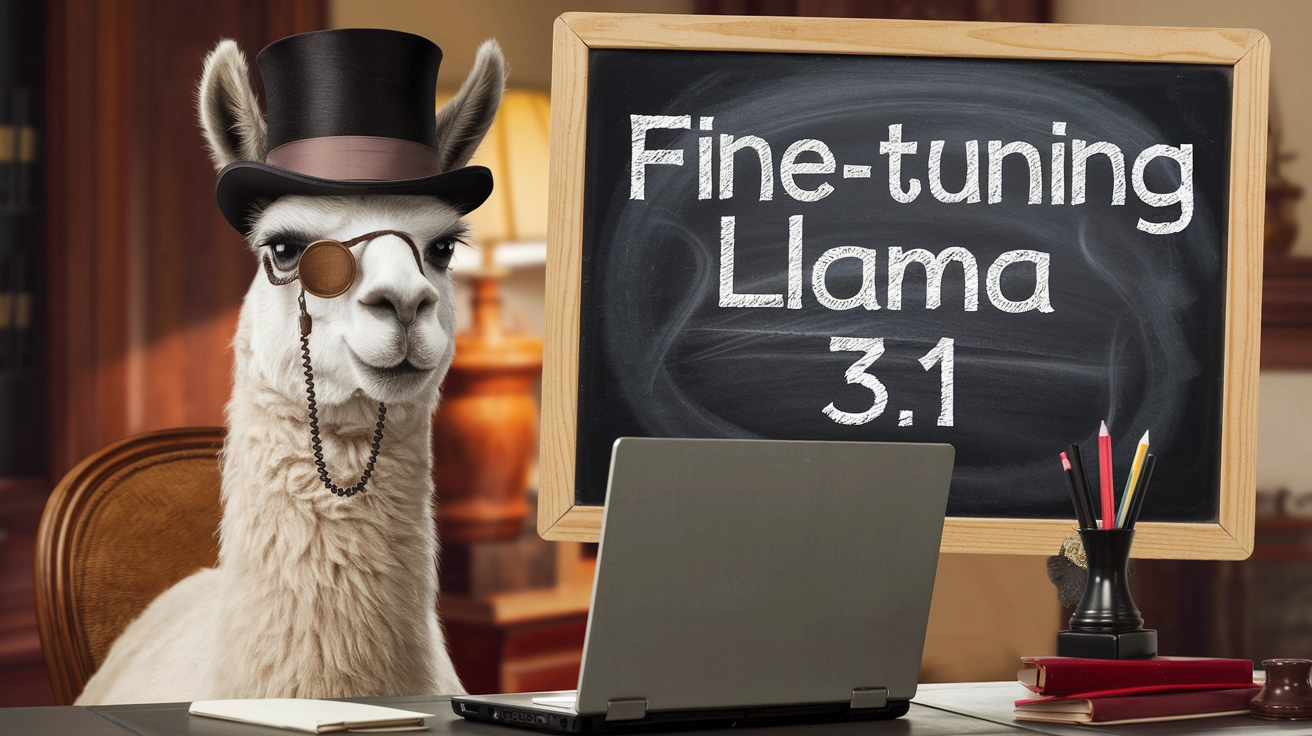Fine-Tuning Llama 3.1 Efficiently with Unsloth

Introduction to Llama 3.1
The release of Llama 3.1 represents a significant leap in model performance, bridging the gap between closed-source and open-weight models. With its capabilities, fine-tuning Llama 3.1 can yield improved performance tailored to specific use cases, making it a cost-effective solution compared to using general-purpose models like GPT-4o or Claude 3.5.
Understanding Supervised Fine-Tuning
This article provides a detailed overview of supervised fine-tuning (SFT), comparing it to prompt engineering and discussing when it is beneficial to employ SFT. The article also delves into critical techniques, including the use of LoRA hyperparameters, storage formats, and chat templates, culminating in a practical implementation of fine-tuning Llama 3.1 8B using Unsloth on Google Colab.
What is Supervised Fine-Tuning (SFT)?
SFT is a method for improving pre-trained large language models (LLMs) by retraining them on a smaller set of specific instructions and answers. The primary goal is to enhance a baseline model’s ability to understand and respond to user instructions effectively, transforming it into an adaptive assistant that provides accurate answers and follows prompts effectively. It can also allow the model to integrate additional knowledge and adapt to specialized domains.
When to Choose SFT Over Prompt Engineering
Before resorting to SFT, it is advisable to explore prompt engineering methodologies such as retrieval-augmented generation (RAG) that can often address many challenges without requiring fine-tuning. However, SFT is a favorable route when existing instruction data meets the need for customization and control, facilitating the creation of tailored LLMs.
Limitations of Supervised Fine-Tuning
Despite its benefits, SFT has limitations, primarily when attempting to encode entirely new information or languages that the base model was not trained on. In such cases, it is prudent to conduct a continuous pre-training phase using a raw dataset prior to SFT. It is also crucial to consider that certain trained models might not reflect individual contributions, even when slight adjustments through preference alignment might help in that regard.
Popular Techniques in SFT
The three most prominent techniques within supervised fine-tuning are:
- Full Fine-Tuning: Involves retraining all parameters of a model, promising optimal results but requiring substantial computational power.
- LoRA: A memory-efficient technique that freezes existing model parameters and introduces lightweight adapters for training without destructive changes.
- QLoRA: An extension of LoRA giving extra memory efficiency while increasing training time, useful in situations with constrained GPU memory.
Implementing SFT with Unsloth
In this guide, we will implement QLoRA to fine-tune the Llama 3.1 model using the Unsloth library by Daniel and Michael Han. Unsloth optimizes the training process, offering faster training and lower memory requirements. We will specifically fine-tune on a high-quality instruction dataset.
Preparing for Training
The fine-tuning process begins with organizing the necessary libraries, loading the model, and setting up the data pipeline. A pre-quantized model will be accessed, enabling efficient resource utilization during the training process.
Dataset Formatting and Template Use
The dataset—comprising instruction pairs—needs to be formatted to accommodate conversation structures, which can be achieved using chat templates. These templates guide how interactions are structured between the user and the model, making interactions more user-friendly.
Specifying Training Parameters
Key training parameters will be defined to optimize the fine-tuning process, with the potential to use various GPU configurations to manage performance based on available resources. By conducting the training on varying sizes of the dataset, users can adapt their approach based on hardware capabilities.
Testing and Evaluation
Post-training, preliminary tests will be run to evaluate the model’s performance, followed by saving the fine-tuned model and converting it into quantization formats suitable for deployment in various inference engines.
Conclusion: Leveraging QLoRA for Fine-Tuning
This guide has explored the process of fine-tuning Llama 3.1 using QLoRA with Unsloth, demonstrating its efficiency and adaptability. By efficiently utilizing limited GPU resources, users can fine-tune LLMs for enhanced performance. Future steps may include evaluating the fine-tuned model, deploying it in practical applications, and sharing it with the broader open-source community.
For further insights into LLMs, check Hugging Face’s extensive resources, and feel free to reach out to me on social media for continued discussions on AI and machine learning advancements.